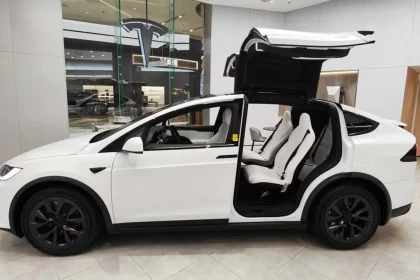
Tesla strives to deliver a complete automotive experience, providing most services a driver might desire. Intending to provide a complete suite of Tesla-branded tools, the company limits customization of its cars’ onboard software, especially ones performed by drivers, double-extra-especially if the desired customization involves apps, tools, and resources developed by parties outside of Tesla.
As hard as the House of Musk tries to enforce its limitations, however, hacks always happen. Build a machine, no matter how perfect, and idiosyncratic nerds will find a way to constructively futz with it. Several noteworthy hacks, from the innocuous to the nefarious, have already been imposed upon Teslas. Recently, coders even worked up a way to meet a widely expressed desire of Tesla drivers: they’ve installed Android Auto on Tesla onboard systems.
The process requires a Raspberry Pi, some digital legerdemain, and a nonzero amount of risk. This is a true hack — it will require digging deep into a Tesla’s digital guts. Success may provide a greater degree of compatibility, allowing installation not just of Android Auto but of other Android apps.
Android Auto with a Raspberry Pi
This hack comes courtesy of distinguished Polish programmer Michał Gapiński, whose ongoing Tesla-Android project liberates Tesla’s onboard computer for all sorts of third-party finagling. Of note, this isn’t the first time we’ve heard of Gapiński’s work: his hack also allows users to install Apple CarPlay. Basic requirements for sideloading Android Auto onto a Tesla start with a Raspberry Pi 4 that has at least 4GB of RAM. Prospective hackers will also need an HDMI module so the Raspberry Pi can capture video, a micro-HDMI to HDMI cable, a USB-A/USB-C connector, an LTE modem, and a computer to use as a terminal.
Of course, the project isn’t officially sanctioned and there are no doubt risks associated with tinkering with your Tesla in this way. If you feel like proceeding with the effort regardless of the risk, we highly suggest you have a look at Gapiński’s own updated how-to before starting. His instructions are seemingly clear and detailed, and most importantly will be changed as and when Gapiński improves his work. His hardware requirements are also worth reviewing since they will likely change as the Tesla hack evolves. Interested DIYers and Tesla owners can also follow the Tesla Android project via its Twitter account.










